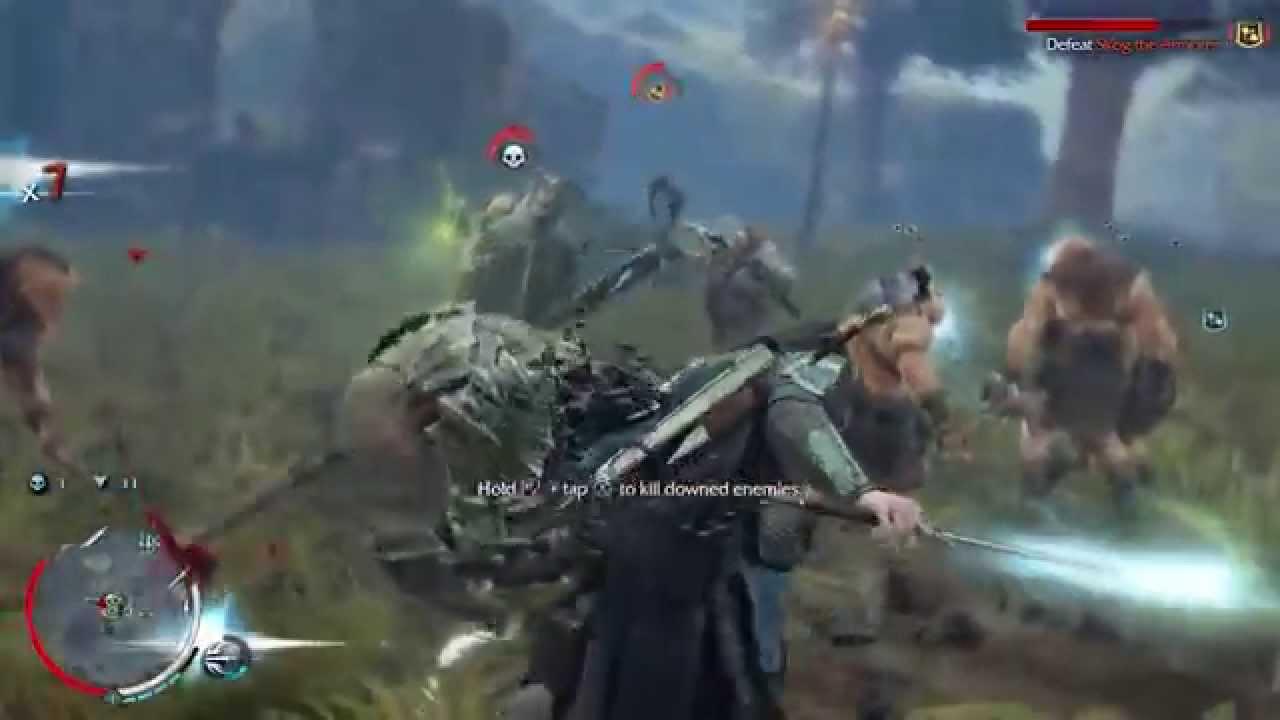
YouTube videos require cookies, you must accept their cookies to view. View cookie preferences.
Direct Link
Direct Link
If you haven’t already, be sure to check out our benchmarking of Shadow of Mordor on Nvidia hardware. We are working on getting AMD hardware too, but supporting us on Patreon will speed up that effort.
Disclosure: This review is co-written by Samsai, Liam’s key was provided by Feral Interactive.
What we think - Spoilers will be plentiful!
It’s pretty rare for Linux to have such a high quality open-world game, and Shadow of Mordor has delivered something pretty special.
The game is pretty bleak, as can be expected fighting through the hordes of Mordor, and the opening scene is especially savage. It lulls you into a false sense of security, as you are playing happy families one minute, and being brutally executed in a sacrifice shortly after.
One of the best things in Shadow of Mordor is the fear and annoyance that comes with being killed, as it really isn’t a laughing matter. If you’re killed, the Uruk that killed you will become more powerful, and harder to defeat the next time. They also might get promotions and you could potentially see a grunt turn into a warchief’s bodyguard. This is what’s called the “Nemesis” system, and it rocks.

We mentioned Uruk’s getting promoted and those are quite important in Shadow of Mordor. A big part of the game is actually about messing with the internal “politics” of Mordor. I use the term “politics” very loosely, since the Uruk usually use their swords rather than their words. This means that in order to progress you must kill certain captains and even warchiefs and replace them with your less powerful Uruks or ones that are loyal to you. This involves assassination attempts, making servants betray their masters, invading feasts, hunts and executions and using a form of magic to turn Uruks into your own servants. However, you cannot just go barging in and expecting to win the fight. Each of the Uruk captains has their own strengths and weaknesses. Some are completely invulnerable to ranged attacks, others have poisoned weapons and some are even scared to death of the local wildlife. Gathering intel about the captains either by interrogating other Uruks or by stealing documents is vital to your success if you want to take them on.
The combat is also where the game shines, it may not be the single most exciting combat experience around, but it’s incredibly accessible. Most of it is just attacking enemies and countering their attacks to keep your hitstreak up to do executions on the Uruk-hai around you. The combinations are easy to do, and you don’t feel overwhelmed when lots of Uruk’s are attacking you. We aren’t saying it’s easy, as you can get beaten down pretty hard if you miss a counter attack.

Sometimes a head-on approach is not the best option to kill Uruks and this is where stealth comes into play. Shadow of Mordor features a stealth system that allows you to sneak past guards right into the Uruk camps and strongholds and silently and swiftly kill your opponents. So, if you are of the sneaking type you’ll probably love the open map design that allows, and requires, you to plan carefully where to go and who and when to kill in order to stay protected by the shadows. I think the stealth system in Shadow of Mordor is one of the best we’ve seen on Linux and the wanna-be assassins behind monitors will definitely appreciate it. There is something quite special about stalking your target, isolating it from the groups of other enemies and then striking deadly and silently. The stealth is sometimes a necessary mechanic too, as we mentioned the Captain’s strength and weaknesses earlier and some can be killed instantly using a stealth kill from above. Things like that help keep the game interesting, as you will need to know that to actually be able to kill the captain, so that’s where intel comes into the equation again. We actually came across one of these captains, and had to seek out some intel on them to stop us getting our buttocks handed to us when trying to attack them normally.
The main strength of the game really is the various ways in which you can complete your objectives, so it would suit button bashing players, and more stealth focused players alike.
The story is a little bit of a let-down, though a relatively gentle one. As you might be aware, the events of Shadow of Mordor happen between Hobbit and the Lord of The Rings trilogy and aren’t directly tied into one or the other. It does share a lot of the elements in both trilogies and especially some of the references to various characters might require knowledge of the LOTR universe. A lot of the game is leaving you to just fend for yourself, without much input in the way of story. If you’re an open-world fan you will love it, but people looking for a deep story-based experience will probably be let down by it.
In Shadow of Mordor you play as Talion, a ranger captain from the kingdom of Gondor who was brutally murdered along with his family after an Uruk attack. But a curse was placed on him at the time of his death which prevented him from entering the void beyond. He is now stuck between the spirit world and the real world with an elven spirit and tries to find a way to break the curse and avenge the death of his loved ones. His state however allows him to resurrect after death and the elven spirit inside of him gives him superhuman powers.
It’s a rather unique approach, but the story doesn’t really suck you in. The game also introduces various sub-plots that seem at least a little bit weird. It sometimes seems like the story was come up with on the spot instead of after careful planning and writing. The story alone might not be strong enough to keep you interested in the game but luckily other aspects of the game are good and the game doesn’t rely solely on the story.
Shadow of Mordor is definitely one of the most graphically heavy games we’ve seen on Linux. Especially the VRAM requirements are something I don’t think we’ve seen before. Up until this point you have been able to max out pretty much anything with just 2GB of VRAM (in 1080p of course). However, that is not the case with Shadow of Mordor which can require up to 6GB of VRAM if you have the HD Content downloaded and enabled. You can do fine with just 2GB but don’t expect to be able to play on Ultra. That said, the graphics even on Low are actually still quite acceptable. If you are interested to see how different hardware works with Shadow of Mordor, check out the benchmark article we linked in the top bit of the article (re-linked here).
You can see two shots here on Low settings:
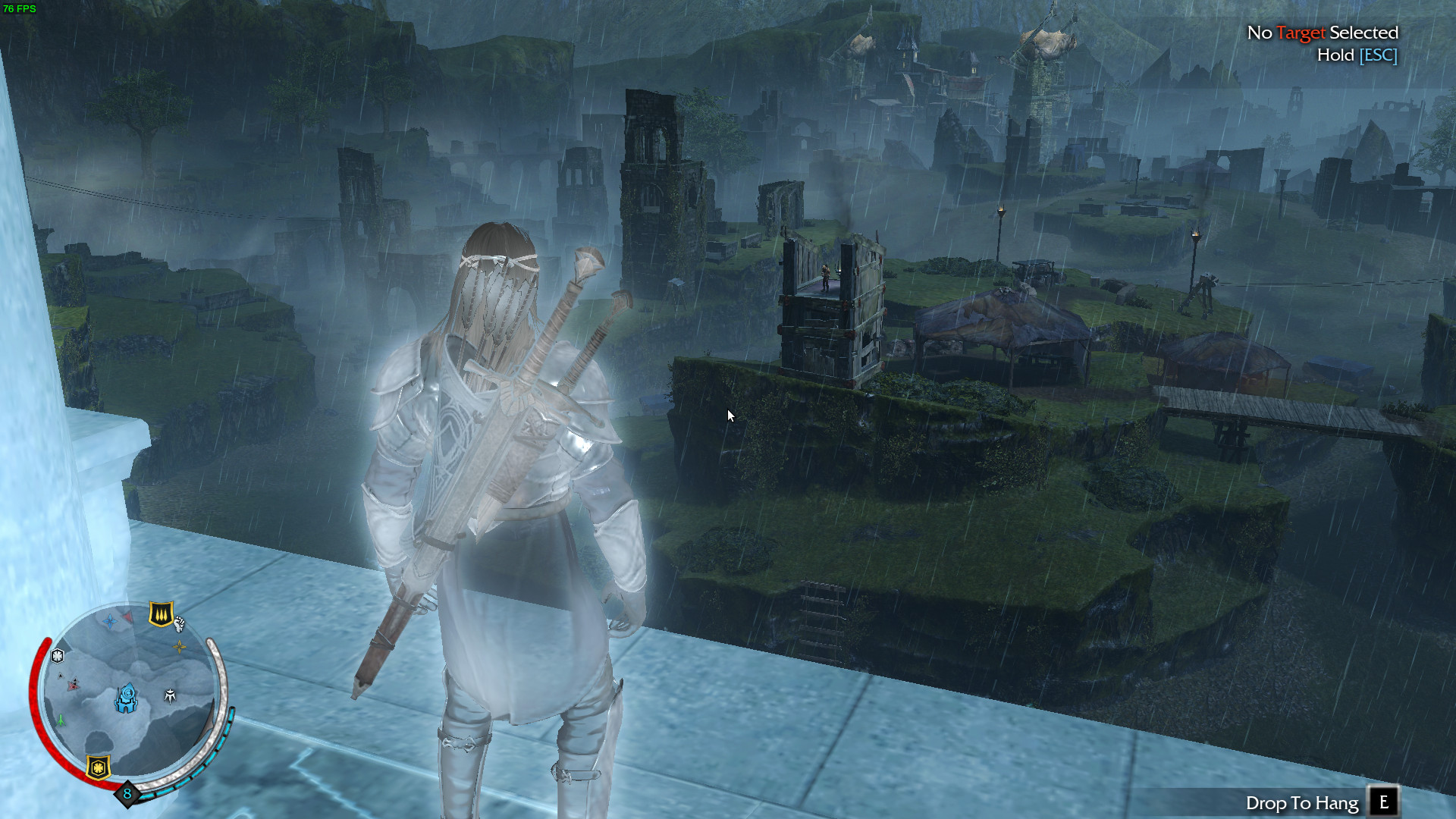
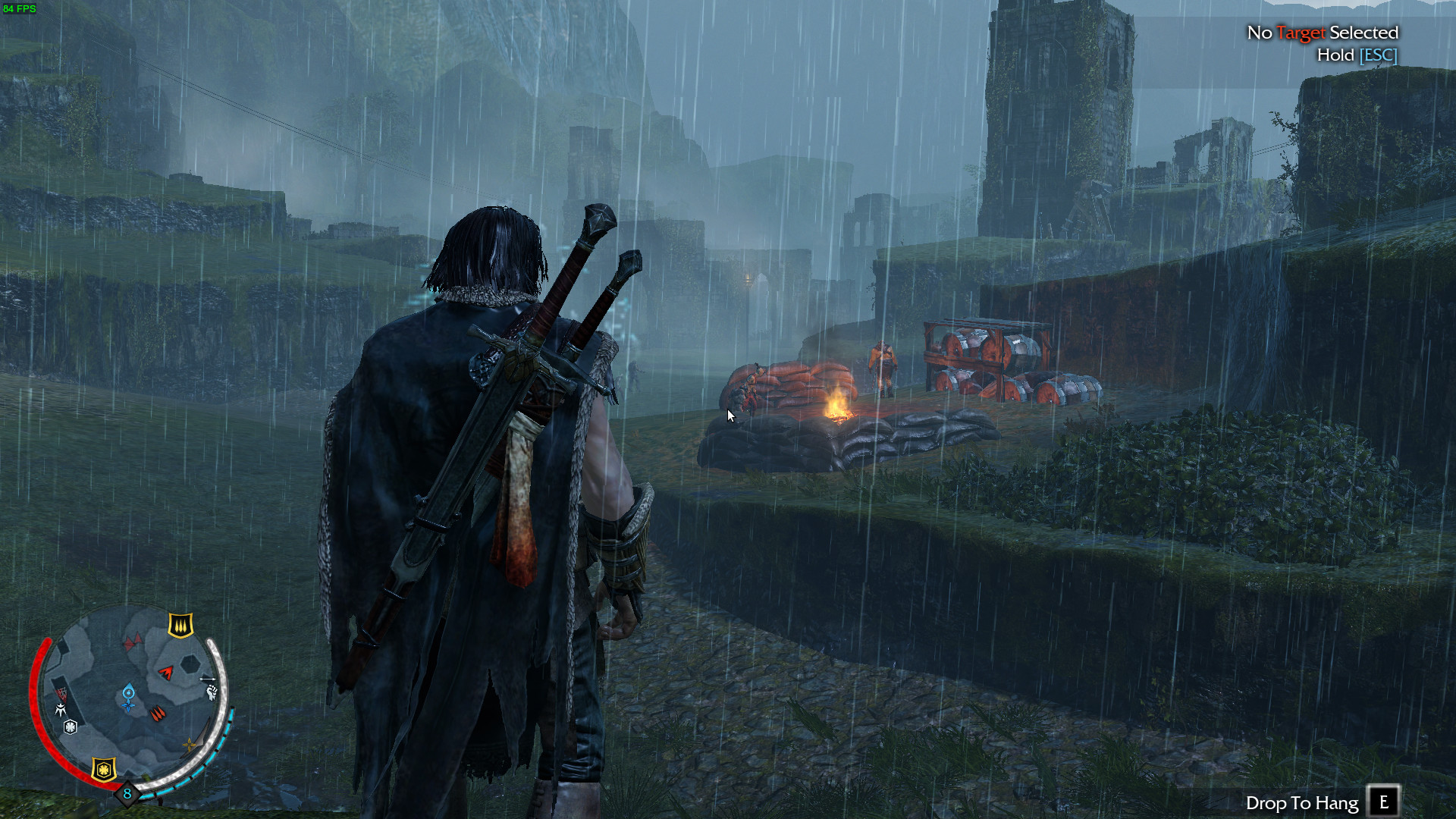
Now see two shots in the same area, with the same weather effects on Very High:
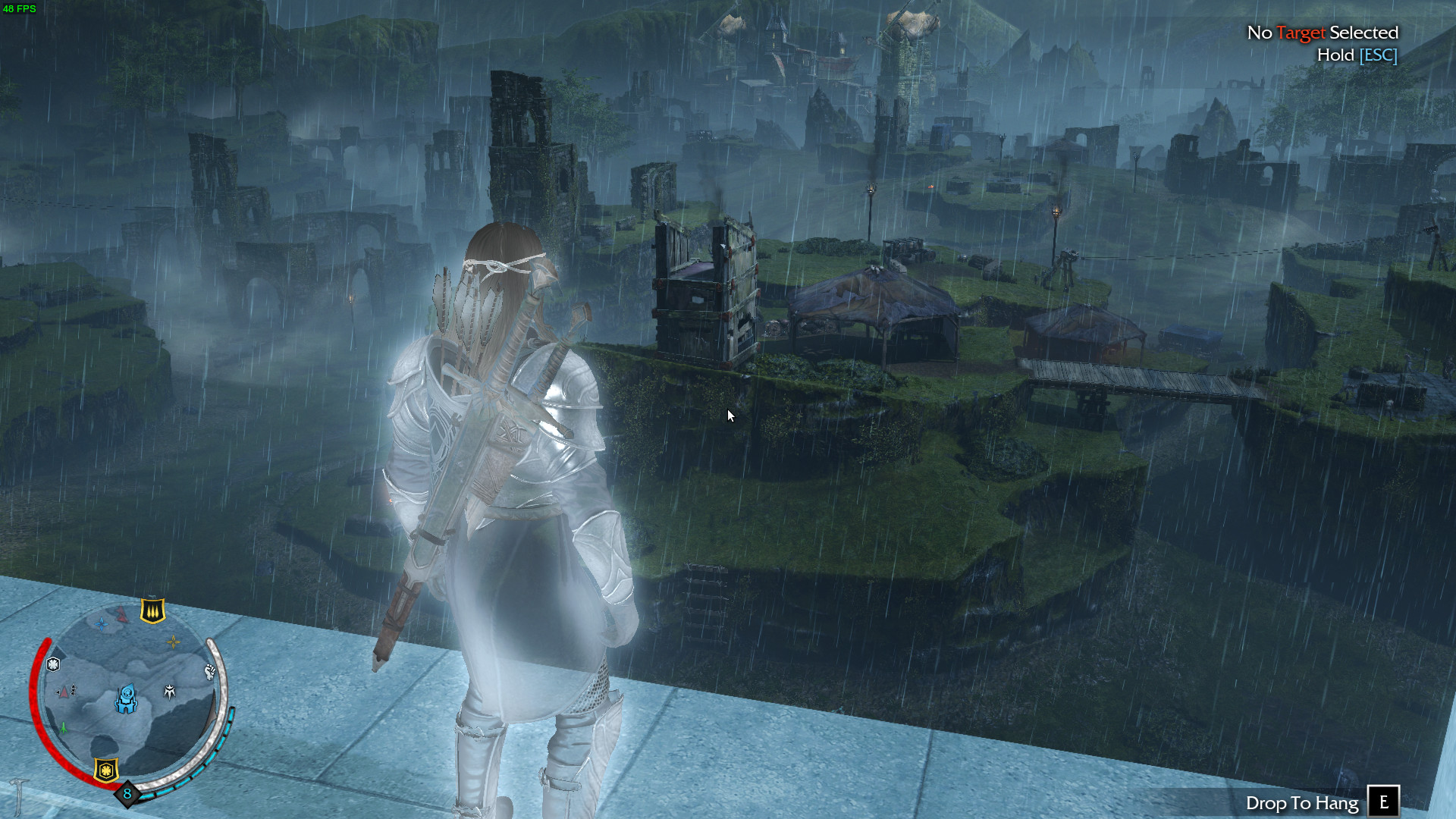
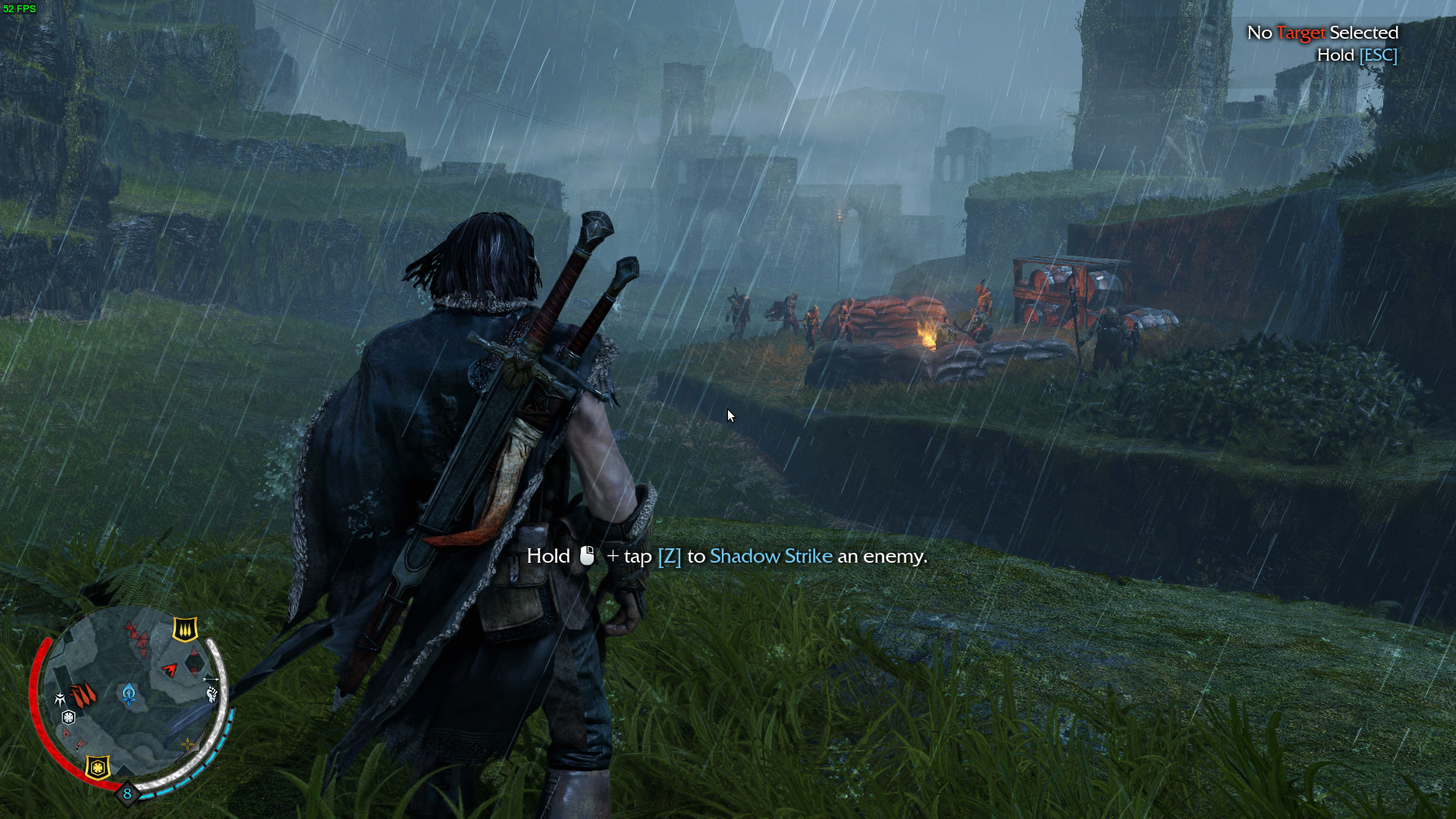
It’s also worth noting that the game does not work properly on systems that use AMD GPUs. We tested the performance on an R7 370 4GB and we got sub-optimal framerates and turning down settings yielded very little performance gains. This one is something to avoid for the AMD folks. You can check out the following graph for some performance statistics.
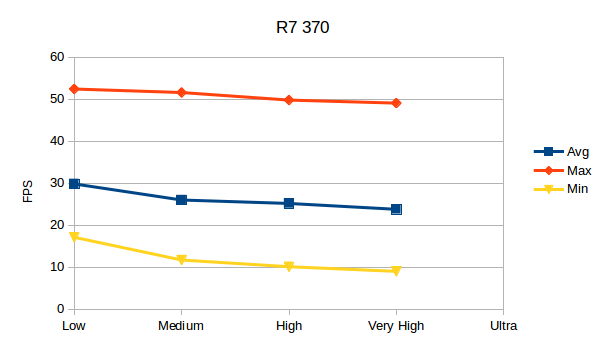
How many of you have completed the main campaign now? Let us know what you think to the overall game in the comments.
Some you may have missed, popular articles from the last month:
Quoting: ColoneilI just want to know if this is specific to my configuration ([email protected] GTX960), because I stopped playing now, waiting for an eventual performance update...That looks like your specific hardware, we have had the odd user with issues (usually using untested/supported ditros) but if you contact Feral's support team with details of the issue and a link to your video etc we can see if we can offer you suggestions.
If it's severe it's likely something with your specific setup that can be fixed to allow the game to run like it does on other peoples machines. It's possible it's your CPU as this game really likely multithread hardware but send us your details and we can have a look.
Last edited by edddeduck_feral on 25 August 2015 at 11:21 am UTC
0 Likes
You can play Som with radeonSI mesa-11.0(git?)/llvm-3.7 with setting launch option in Steam with "force_glsl_extensions_warn=true MESA_EXTENSION_OVERRIDE=GL_ARB_arrays_of_arrays %command%"
0 Likes
Some gameplay by me with GTX 1060:
View video on youtube.com
View video on youtube.com
0 Likes


See more from me